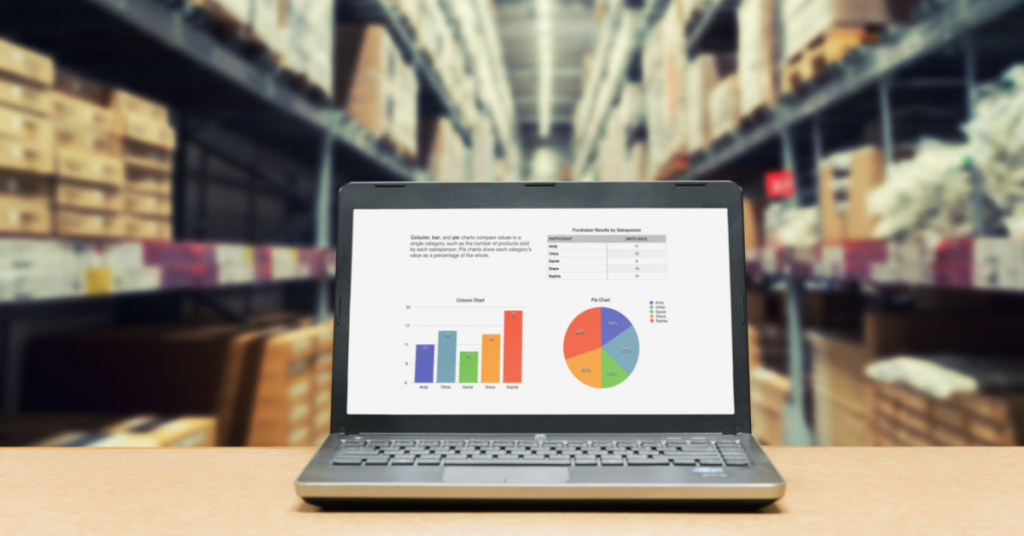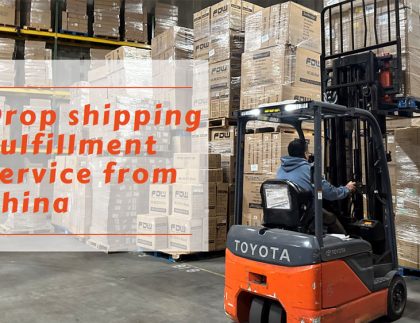What Is Freight Shipping & How It Works
Explore how businesses transport goods globally, learn about freight shipping options and why it’s used.

Freight shipping is a crucial component of global commerce, enabling businesses to transport goods across borders efficiently and cost-effectively.
As the world becomes increasingly interconnected, freight shipping has grown in significance, presenting both opportunities and challenges for companies looking to expand their reach.
In this article, we will explore the basics of freight shipping, its benefits, and strategies for selecting the right carrier and managing your cargo effectively.
Table of Contents
What is Freight?
Freight refers to goods or cargo that are transported by ship, train, truck, airplane, or other means from one place to another. It can be raw materials, finished products, hazardous materials or even perishable items like food or flowers.
The term “freight” is often used interchangeably with “cargo,” although some people use “freight” specifically to refer to bulk commodities such as coal or grain, while “cargo” may encompass smaller or more diverse items.
Benefits of Freight Shipping
Freight shipping, which involves the transportation of goods in large quantities using various modes of transportation, offers several benefits that are crucial for businesses and the global economy. Here are some of the key benefits of freight shipping:
Cost-Efficiency
Freight shipping allows for the transportation of goods in bulk, which often results in lower transportation costs per unit compared to individual shipments. This is particularly advantageous for businesses that deal with large volumes of goods
Economies of Scale
Freight shipping leverages economies of scale, meaning that the cost per unit of transportation decreases as the quantity of goods being shipped increases. This can lead to significant cost savings for businesses, especially when shipping long distances.
Global Trade
Freight shipping plays a vital role in facilitating global trade by connecting producers and consumers across different regions and countries. It enables the movement of raw materials, components, and finished products to reach markets worldwide.
Efficient Transportation
Freight shipping utilizes specialized transportation modes such as container ships, cargo planes, and trains designed to carry large volumes of goods efficiently. These modes often have optimized processes for loading, unloading, and transporting cargo, minimizing delays.
Specialized Handling
Different types of goods may require specific handling methods due to factors like fragility, temperature sensitivity, or hazardous nature. Freight shipping provides the infrastructure and expertise to handle diverse cargo types appropriately.
Reduced Carbon Footprint
While transportation does contribute to carbon emissions, freight shipping can be more environmentally friendly compared to individual shipments. Transporting goods in larger quantities and using more efficient transportation modes can help reduce the carbon footprint per unit of cargo.
How to Calculate Freight Shipping Quotes

To calculate freight shipping quotes, follow these steps:
Determine the weight and dimensions of the shipment: This will help determine the volume and density of the package, which can affect the cost of shipping. You can use an online calculator or measure the item yourself if it’s small enough.
Choose a shipping method: Decide on the type of transportation you want to use for your shipment, such as truckload, less-than-truckload (LTL), intermodal, or air freight. Each option has its own pros and cons, so choose the one that best fits your needs.
Get quotes from multiple carriers: Once you have determined the weight, dimensions, and shipping method, reach out to several different carriers to get quotes. Be sure to ask about any additional services, such as insurance or tracking, that may be available.
As a 3pl company, DIDADI Logistics Tech have a broad network of partnerships with carriers, freight forwarders, customs brokers, and warehouses. These partnerships give us access to competitive pricing and preferred rates.
Compare rates and fees: Look at the total cost of each quote, including any additional fees or charges. Consider factors like transit time, reliability, and customer service when making your decision.
Negotiate with the carrier: If you find a good deal, consider negotiating with the carrier to see if they can offer you a better rate. Keep in mind that some carriers may have minimum requirements for certain services, so be prepared to provide details about your shipment.
Book your shipment: Once you have chosen a carrier and agreed upon a price, book your shipment by providing all necessary documentation, such as packing lists and customs forms. Make sure to keep track of your shipment number so you can easily track your packages.
Monitor your shipment: Use the tracking number provided by the carrier to monitor the status of your shipment. This can give you peace of mind knowing exactly where your items are and when they will arrive.
Freight Shipping Modes
Here are some of the common freight shipping modes:
Truck Freight
This mode involves transporting goods by road using trucks. It’s highly flexible and can accommodate various types of cargo. There are two primary types of truck freight:
- Full Truckload (FTL): In FTL, a truck is filled with a single shipment, usually belonging to a single customer.
- Less Than Truckload (LTL): LTL involves combining multiple smaller shipments from different customers in a single truck to optimize space and reduce costs.
Rail Freight
Rail transportation is often used for heavy or bulk goods that don’t require immediate delivery. It’s energy-efficient and can handle large volumes of cargo over long distances.
Ocean Freight
This mode involves shipping goods across oceans using cargo ships or container ships. It’s ideal for transporting large quantities of goods internationally, but it can be slower compared to other modes.
Air Freight
Air shipping is the fastest mode of transportation and is suitable for time-sensitive or high-value goods. However, it’s generally more expensive than other modes.
Intermodal Freight
Intermodal shipping involves using multiple modes of transportation in a single journey. For example, goods might travel by truck, then by rail, and finally by ship to reach their destination.
Courier Services
These services are typically used for small, urgent shipments. Companies like FedEx, UPS, and DHL offer courier services for quick and reliable delivery.
Parcel Freight
Similar to courier services, parcel shipping involves sending small packages and parcels using postal services or private carriers.
How to Ship Freight From China
Shipping freight from China can be a complex process, but with careful planning and execution, it can be done successfully. Here are some steps to consider:
Determine the type of goods you want to ship
Before you start shipping anything, you need to determine what kind of items you will be transporting. This will help you choose the right mode of transportation, packaging materials, and other logistics.
Select a Freight Shipping Company
There are many carriers available for shipping freight from China, so it’s important to do your research and find one that has a good reputation and offers competitive rates. You may also want to consider working with a third-party logistics provider who can handle all aspects of the shipping process for you.
Obtain necessary documents
Depending on the types of goods you are shipping and the countries involved, there may be specific documentation requirements. Make sure you have all necessary paperwork, such as commercial invoices, customs declarations, and certificates of origin.
Pack your cargo carefully
Proper packaging is essential to prevent damage during transit. Use sturdy boxes and materials that can withstand rough handling, and make sure everything is securely fastened.
Label and mark your packages clearly
Clear labeling and markings can help prevent confusion and delays at customs. Include your company name, contact information, and any relevant tracking numbers.
Arrange for insurance
It’s highly recommended to purchase insurance for your shipment, especially if you’re shipping high-value or fragile items. Check with your carrier about their insurance options and coverage limits.
Track your shipments
Keep track of your shipments throughout the journey by using a tracking number provided by your carrier. This can help you stay informed about the status of your shipment and identify any potential issues early on.
Consider additional services
Depending on your needs, you may want to consider additional services like expedited shipping, freight forwarding, or warehousing. These services can help streamline the shipping process and provide extra support along the way.
Be prepared for customs clearance
Customs regulations can vary depending on the country you’re shipping to, so make sure you understand the requirements beforehand. This may involve obtaining special permits or licenses, paying duties or taxes, or providing additional documentation.
Managing Freight and Commerce With DIDADI Logistics
DIDADI Logistics Tech is revolutionizing the freight and commerce landscape through innovative solutions. With state-of-the-art technology, DIDADI streamlines the entire shipping process, offering real-time tracking, efficient documentation management, and enhanced visibility into supply chains. Whether it’s coordinating shipments or optimizing routes, DIDADI empowers businesses to thrive in the global marketplace.
Previous Post: A Step-by-Step Guide For Shipping Packages Internationally
Start your ship now!
- Improve your cross-border shipping
- Decrease expenses
- Accelerate deliveries









